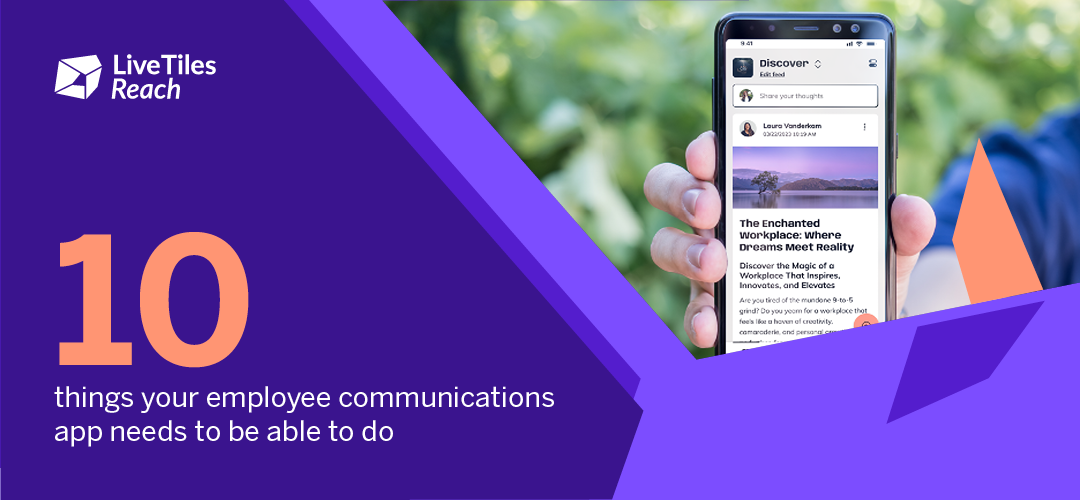Three Key Steps to Engaging and Retaining Frontline Workers in Retail
Frontline retail workers have always been critical to their industry. They make sure orders are complete, customers are satisfied, and that the businesses they are part of are represented well.
In recent years, their importance has been further highlighted. Frontline retail workers showed how their work can make or break the business, with 85% of shoppers still shopping in physical stores. But they don’t necessarily feel inspired by these hard facts.
Despite the crucial role they play, frontline workers are the least engaged among employees. According to the UKG, the majority of retailers in the US also found it has become more difficult to retain good employees than it is to attract new talents. Labor shortages left 68% of retail stores in the US struggling to meet sales goals in the summer of 2021, and most are concerned about burnout and fatigue among their frontline workers. These numbers show engaging frontline retail workers must be a priority of retailers everywhere.
According to recent (and very welcome) Research conducted by Salesforce we learn that investments in employee experience can ultimately lead to a better bottom line. Based on data collected from 19,116 employees across 1,036 retail stores of a major retail brand, the research shows that a customer-facing employee base that is more tenured, has more experience in prior rotations, is higher skilled, and is more skewed towards full time, generate a 50% increase in revenue. These are serious employee experience proof-points to be taken on board.
More specifically, the research revealed customer-facing employees in a retail store cost the business $16 per employee/hour to generate $41 in profit. And by investing $12/hour to get from the bottom quartile to the top quartile of employee experience, it’s predicted that the store would earn an extra $18/hour of profit. That’s equivalent to a 150% ROI.
Case in point: the research says raising the employee experience performance of a store up to the 75th percentile, if achieved, would correspond to a 6% increase in total annual revenue across a company as a whole. Incorporating basic operational and financial assumptions, the 5-year ROI of this employee investment is approximately 30%, and the 10-year prediction would be in excess of 80%.
So how can organizations better engage and retain frontline retail workers? There’s a lot of encouraging research and use cases of how this can be done effectively.
Meet them where they are
In a previous article, we emphasized how retail workers are on their feet all day, either restocking shelves with new inventories or serving customers. This shows mobility is the key to boosting employee engagement when it comes to relevant and useful internal communications.
An employee engagement platform like LiveTiles Reach, which can be deployed through a mobile app, provides managers and workers alike instant access to content that helps them improve their services in an instant.
Build better relationships between managers and frontline workers
Boston Consulting Group researchers found that while compensation and COVID-related problems were the biggest reasons for turnover among US-based frontline workers during the pandemic, next on the list was a bad relationship with their boss. Frontline retail managers may also be having a hard time coping during the pandemic, which can affect how they interact with teams.
So an employee engagement platform that can assist managers in serving their teams, or allow workers to easily find information their superiors cannot deliver instantly, can be a life-saver for under-pressure employees. Harvard Business Review also suggests providing necessary support and training for your frontline staff through more accessible means.
Strengthen backend support
After training, implementation is the next important step in ensuring goals are met. Proper and effective communication is then needed to allow teams to connect and follow up on objectives.
As we have previously noted, staff need to easily connect with their team, and if they have a problem on the floor, they should be able to find an answer quickly. Such concerns can easily be raised and addressed if heard on a proper platform.
Our LiveTiles Reach app allows users to chat with team members in a single, accessible platform. This can help frontliners get a better grasp of a team’s agenda, or even track schedules.
Still, even with all these iterations, retailers need to craft ways to future-proof their businesses in a fast moving and innovative sector. E-commerce is on the rise, which can pressure on-site workers in brick-and-mortar stores to provide a more specialized customer experience.
While the instinctive response of retailers is to increase pay of frontline workers to improve performance and engagement, UK-based Deloitte says this may no longer be enough.
To future-proof their businesses, retailers need to go beyond “instinctive” responses to gain a competitive edge against other retailers. So increasing frontliners’ pay may help them stay, but only temporarily.
Deloitte added: “A differentiated relationship is one that is uniquely tailored to appeal to the workers the organization most needs to engage.”
This can mean providing frontliners access to mental health support and safety guidelines, or providing friction-free channels to reach the human resource team to learn more about employee benefits, which are pivotal in the current climate.
Highlighting the purpose and goals of the organization also boosts the morale of workers. According to Deloitte, purpose-driven organizations have 40% higher levels of worker retention. For example: Costco enjoys a below 6% employee turnover rate because they walk the talk in enhancing employee experience with a comprehensive benefits package.
These recommendations show that going back to the basics of workplace engagement—from supplying the proper tools and improving the connection between teams—can create a better work experience for frontliners.








